Byzantine Swords
Jun 25, 2013 16:35:40 GMT
Post by Jack Loomes on Jun 25, 2013 16:35:40 GMT
This thread is dedicated to Dr. Timothy Dawson without whose groundbreaking work in the field of history by reconstruction this thread would not be possible. I am deeply indebted to him for kindling my interest in the Byzantine World and have borrowed heavily from his ideas and theories to put together this article. While I am a graduate (B.A. European Lit.) it is Dr. Timothy Dawson whose authority I delegate to on specific matters of Byzantine material history. This thread does not represent a definitive collection as it has not been edited or proofed by Dr. Timothy Dawson.
Dr. Timothy Dawson's personal website is www.levantia.com.au/
Also worthy of mention is the work of Professor Valeri Yotov & Raefelle D'Amato to both of whom I am enormously grateful.
Please note that there are a few (not many) Russian ikons from the period contemporary to the Byzantine era interspersed through the thread, this is done only when the styles of the warrior's panoply are exceedingly Byzantine in form. Russia being the Byzantine commonwealth looked to Constantinople on many matters for direction and inspiration and emulated her on many levels. These ikons will generally be readily identifiable as they will be accompanied by Cyrillic rather than Greek script (note also that Cyrillic script was also a Byzantine invention!). I have also included some images of post-Byzantine ikons - because they often depict styles of swords imitated from known styles of swords from the Byzantine period.
Kind Regards,
Jack Loomes
It’s strange that we in the West have not hitherto paid greater attention to the study of the Byzantine world, the lineal descendant of Rome, and that Constantinople is often viewed as somehow disconnected from the Ancient Roman world when in no way was this true. Byzantium was the closest the medieval world came to fielding a super power, was unquestionably the cause of the Renaisance, and was a military force so preeminent that victories were routine, while defeats were studied and celebrated by that culture. There is so much to fascinate us there, and yet, we still have a long way to come in terms of appreciating it.
Between the Catholic world and the Islamic however, much has been done to throw sand over the legacy of the Romiosi; though we have the great fortune to live in an age where the religious and cultural reasons for suppressing the memory of Byzantium are now being swept aside in the interest of knowledge of the longest lived Empire mankind has ever produced.
Byzantine Swords represent a tradition of swords that is both familiar to the Western tradition and completely alien to it. The traditional and well trod Oakeshott Typology, as useful as it is in categorising the swords of the Catholic West, is at odds with the swords of the Byzantine World. However A. Bruhn Hoffmeyer established a typology for Byzantine Swords that is infinitely more relevant in 1966:

There are many swords which have now been identified as Byzantine which will be discussed and examined in due course. Of great use to the student of the Byzantine Sword however is depictions in Byzantine Art, which frequently show in amazing detail the Byzantine Sword as it existed in the Byzantine World contemporary to the artwork.Below is one such example showing a cruciform sword with a Type R (spherical) pommel. It is worth noting here that the Byzantine fondness of the Type R pommel extended from antiquity right through until the fall of Constantinople to the Turks in 1453:

Furthermore sometimes the Type R pommel was not peened but was attached by way of a rivet in the manner of the swords of the cavalry of the steppe:

Here the Byzantine Spherical pommel is depicted on a slightly curved one edged sword referred to as the Paramerion:


Here the Type R pommel is shown affixed to the end of a hand and half or two handed sword of the later Medieval period:


One the many advantages of the Type R pommel is that it allows a pommel to have a smaller profile, as a sphere contains more mass than a disc of the same profile, which can be used to create a pleasing aesthetic such as in these examples:




This example shows a slightly flattened sphere with a Romanesque peenblock:

Below is a sword the Dr. Timothy Dawson has indicated is more likely than not Byzantine in origin, by way of decoration on the blade and its unusual (for the West) globular pommel:

The same sword was examined in Ian Pearce’s Swords of the Viking Age, below is an extract detailing the sword:

The same sword (sixth from the left) in another museum display:

A tradition of swords existed throughout Constantinople’s history as a Christian Empire that very closely emulated the slender and long styles of swords of their Persian neighbours. The Hoffmeyer Typology lists examples at numbers 11 & 28 – 31.These swords tend towards a lenticular or pillow cross section and came in single and double edged varieties. More often that not they had parallel edges for most of the blade’s length.
Frequently the swords had a metal cross guard, but either no pommel, or an organic pommel, but in either case it is likely the pommel was a continuous part of the wood of the handle.
In other cases the swords featured copper alloy cross guards with sleeves which extended down the blade, which would enclose the mouth of the scabbard, thereby precluding rain from entering, and a grip and pommel that were attached with rivets. This method of construction extended to other types of Byzantine Swords.







The ‘Spanish’ style of hilt is represented in Byzantine Art, but who influenced whom remains a mystery.


This sword below features the Spanish style of hilt, but this style of blade may or may not have enjoyed contemporary use, or may have been artistic license. Raeffele D’Amato believes forward curved swords were in use in a period continuous from antiquity. This sword appears as though forward curved like a sickle in this photo, though does not in other photos (see later in the thread).

An example of a very large, almost Claymore-like, Byzantine Sword:

This Serbian Warrior Saint is equipped in the Byzantine fashion, the ikon comes from the late Byzatine period.

This fresco shows both a beautiful example of a Spathion and a Paramerion.
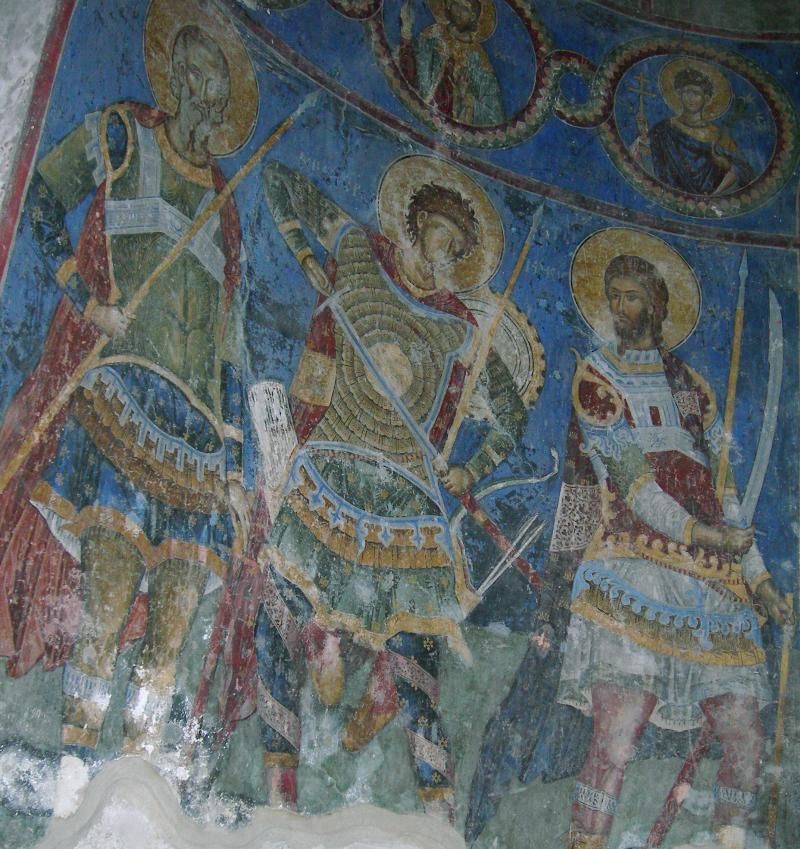
Another:

This image appears to show a Byzantine Sword like the Serci Limani shipwreck example:

A slender, compact cruciform sword from the late Byzantine Period.

Examples of hexagonal pommels:

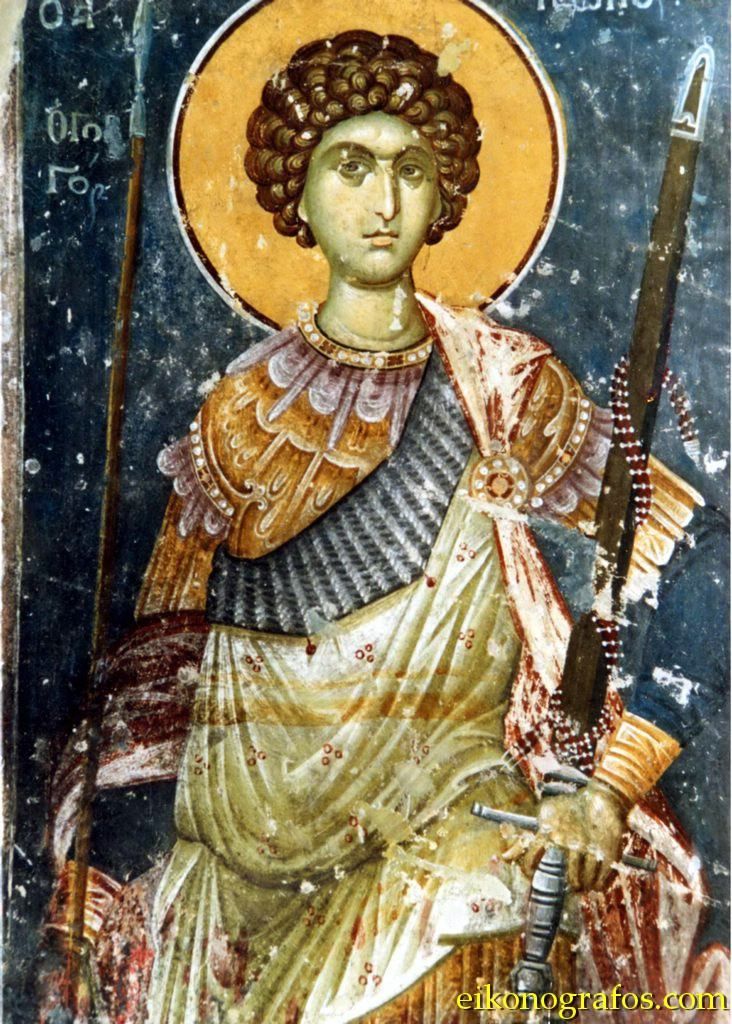
A beautiful Byzantine Sword showing an offset fuller, much like those still found on Caucasian Qamas.

As previously touched upon the Byzantine way of war frequently utilised a curved sword adapted from the Avar sabre. This appears to have been, for the most part, single edged, though pictorial sources seem to indicate that double edged variants may have existed.



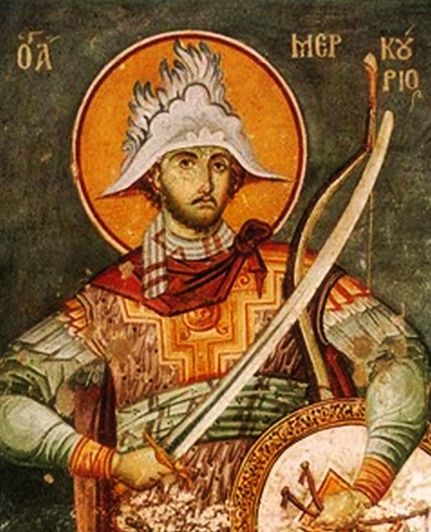
The now defunct Microsoft Encarta hosted this image, which it described as “A Byzantine & German Sword”. While the top sword is definitely Byzantine in form, and the bottom may be Byzantine also, the top sword is definitely not German in origin. Thusly we may conclude that the top sword is the Byzantine.I have so far been unable to find out any other information about this superlative specimen, but continue to be on the look out for it.

The image of the sword comes courtesy of Raffaele D’Amato and shows a find from Bulgaria. It was located at the site of a Byzantine battle and was the possession of a Varangian Guardsman. What is so exceptional about this specimen is that it clearly demonstrates the mixed nature of the panoply of the Varangian Guard, even down to individual items. This is a Viking Sword but with a distinctly Byzantine cross guard.

Below is another example of the mixed nature of Varangian Guardsmen’s gear. This sword (bottom right) is a Viking Sword but with a grip and pommel riveted on in the style of Steppe Swords. It has been identified as Byzantine by Professor Valeri Yotov.

Our Lord and Saviour, comes: “not to bring peace, but to bring a sword…” (Matthew 10:34) Note again the comparatively compact hilt configuration.
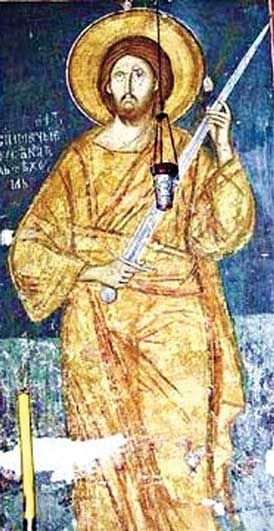
Unfortunately it is no longer possible to discern what sort of pommel this sword bore, but the blade and guard are beautiful examples of the Byzantine style.

Compact hilts:



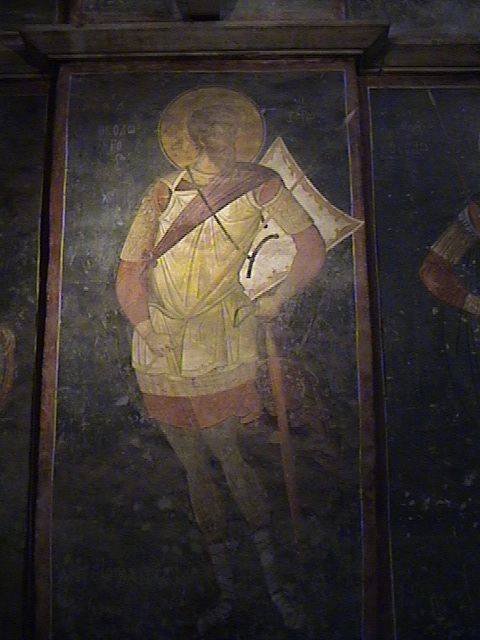




A rare depiction of a Byzantine wielding a dagger. This weapon also bears the pommel style the Byzantines made their own – Type R, or the spherical.
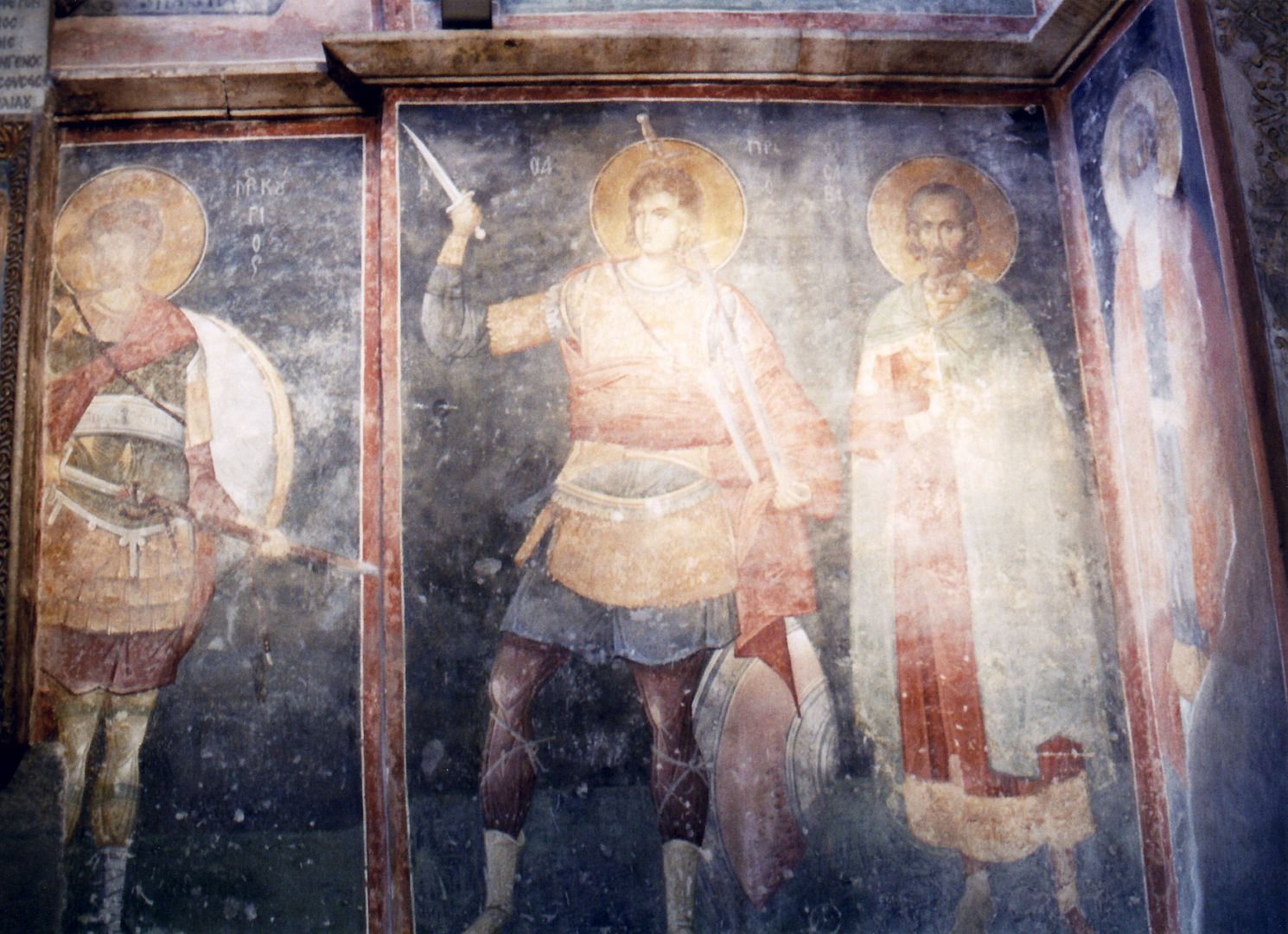
This image from a Byzantine site in Kosovo again depicts J.C., this time with a beautiful onion pommeled sword:

A Byzantine sabre / Paramerion variant:

A spectacular late Byzantine example with a globular pommel and stiff medial ridge:

It is not uncommon to see Byzantine examples of swords with guards which turn downward towards the hand. This configuration is sometimes seen on 20th and 21st century knives. It is surprisingly comfortable when used with a stiff wrist and strong arm.

The onion pommel together with the very Byzantine spherical peen block:

The Tetrarchs from late antiquity bear swords in the Romano-Persian style of the kind that were also implemented by Eastern Romans then and in the early medieval era:



Spherical terminals mark the ends of this crossguard, a very common feature on Byzantine swords:
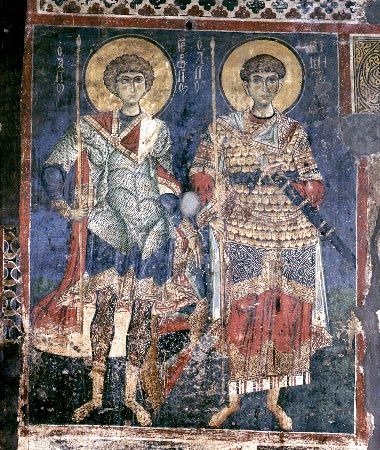
Another elegant spherical pommel:
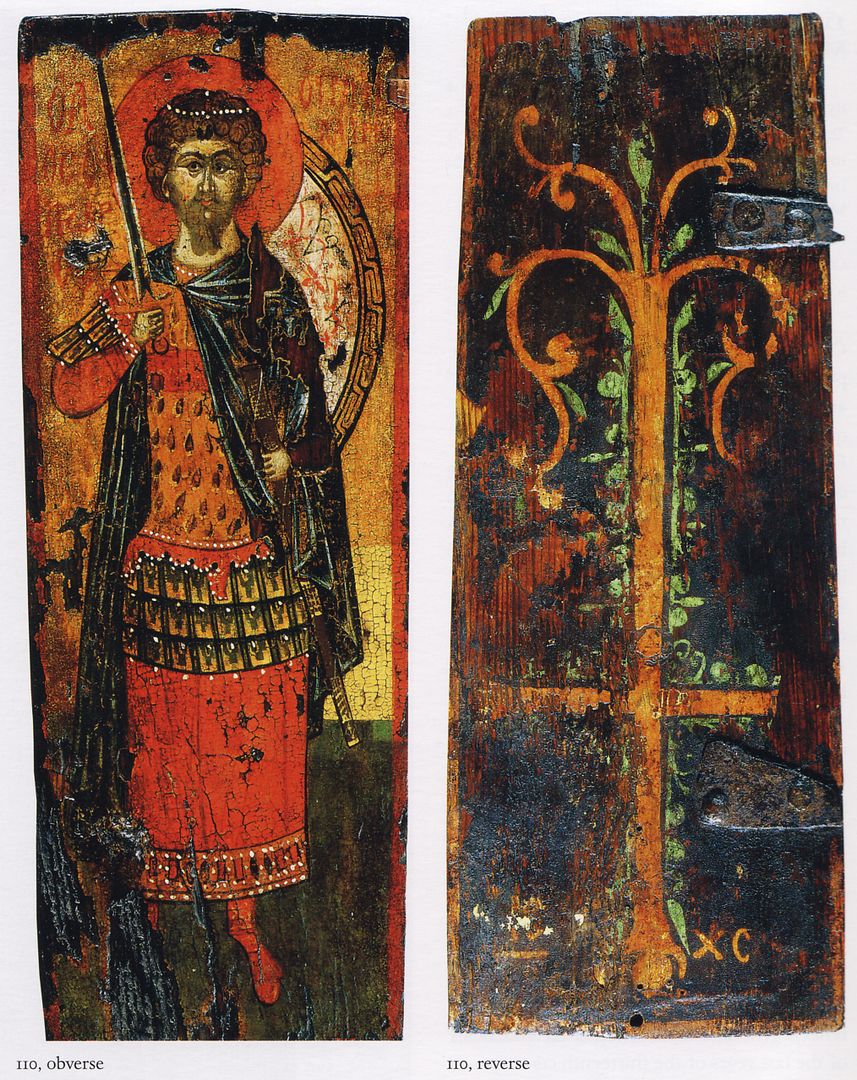
Another demonstration, this one particularly exquisite, of the Byzantine preponderance for small and refined sword hilts:

Another:

A flattened spherical pommel:

Unknown but remarkable for the detail on the scabbard:

Type R:

This example is best described as bearing the ‘pillowed’ style of guard that found favour in Byzantium:

These examples appear from time to time. I am uncertain whether they are of the ‘mushroom’ style or lobed, in other words somewhat cylindrical or flattened, as a result of artistic license. The mushroom style is corroborated, the lobed I am not as sure about:

A closer picture of Nestor bearing an attractive gold hilted sword:

Paramerions, showing the variety of shapes they came in:

This example from the 13th century:

A very interesting example showing a sword without a crossguard.
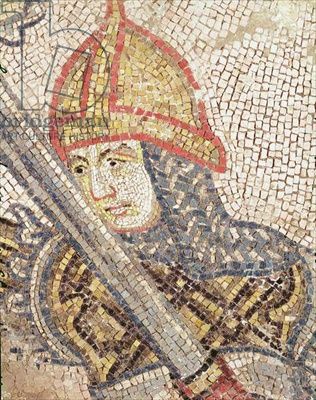
A diamond shaped pommel:

Another onion shaped example
Dr. Timothy Dawson's personal website is www.levantia.com.au/
Also worthy of mention is the work of Professor Valeri Yotov & Raefelle D'Amato to both of whom I am enormously grateful.
Please note that there are a few (not many) Russian ikons from the period contemporary to the Byzantine era interspersed through the thread, this is done only when the styles of the warrior's panoply are exceedingly Byzantine in form. Russia being the Byzantine commonwealth looked to Constantinople on many matters for direction and inspiration and emulated her on many levels. These ikons will generally be readily identifiable as they will be accompanied by Cyrillic rather than Greek script (note also that Cyrillic script was also a Byzantine invention!). I have also included some images of post-Byzantine ikons - because they often depict styles of swords imitated from known styles of swords from the Byzantine period.
Kind Regards,
Jack Loomes
It’s strange that we in the West have not hitherto paid greater attention to the study of the Byzantine world, the lineal descendant of Rome, and that Constantinople is often viewed as somehow disconnected from the Ancient Roman world when in no way was this true. Byzantium was the closest the medieval world came to fielding a super power, was unquestionably the cause of the Renaisance, and was a military force so preeminent that victories were routine, while defeats were studied and celebrated by that culture. There is so much to fascinate us there, and yet, we still have a long way to come in terms of appreciating it.
Between the Catholic world and the Islamic however, much has been done to throw sand over the legacy of the Romiosi; though we have the great fortune to live in an age where the religious and cultural reasons for suppressing the memory of Byzantium are now being swept aside in the interest of knowledge of the longest lived Empire mankind has ever produced.
Byzantine Swords represent a tradition of swords that is both familiar to the Western tradition and completely alien to it. The traditional and well trod Oakeshott Typology, as useful as it is in categorising the swords of the Catholic West, is at odds with the swords of the Byzantine World. However A. Bruhn Hoffmeyer established a typology for Byzantine Swords that is infinitely more relevant in 1966:

There are many swords which have now been identified as Byzantine which will be discussed and examined in due course. Of great use to the student of the Byzantine Sword however is depictions in Byzantine Art, which frequently show in amazing detail the Byzantine Sword as it existed in the Byzantine World contemporary to the artwork.Below is one such example showing a cruciform sword with a Type R (spherical) pommel. It is worth noting here that the Byzantine fondness of the Type R pommel extended from antiquity right through until the fall of Constantinople to the Turks in 1453:

Furthermore sometimes the Type R pommel was not peened but was attached by way of a rivet in the manner of the swords of the cavalry of the steppe:

Here the Byzantine Spherical pommel is depicted on a slightly curved one edged sword referred to as the Paramerion:


Here the Type R pommel is shown affixed to the end of a hand and half or two handed sword of the later Medieval period:


One the many advantages of the Type R pommel is that it allows a pommel to have a smaller profile, as a sphere contains more mass than a disc of the same profile, which can be used to create a pleasing aesthetic such as in these examples:



This example shows a slightly flattened sphere with a Romanesque peenblock:

Below is a sword the Dr. Timothy Dawson has indicated is more likely than not Byzantine in origin, by way of decoration on the blade and its unusual (for the West) globular pommel:

The same sword was examined in Ian Pearce’s Swords of the Viking Age, below is an extract detailing the sword:

The same sword (sixth from the left) in another museum display:

A tradition of swords existed throughout Constantinople’s history as a Christian Empire that very closely emulated the slender and long styles of swords of their Persian neighbours. The Hoffmeyer Typology lists examples at numbers 11 & 28 – 31.These swords tend towards a lenticular or pillow cross section and came in single and double edged varieties. More often that not they had parallel edges for most of the blade’s length.
Frequently the swords had a metal cross guard, but either no pommel, or an organic pommel, but in either case it is likely the pommel was a continuous part of the wood of the handle.
In other cases the swords featured copper alloy cross guards with sleeves which extended down the blade, which would enclose the mouth of the scabbard, thereby precluding rain from entering, and a grip and pommel that were attached with rivets. This method of construction extended to other types of Byzantine Swords.







The ‘Spanish’ style of hilt is represented in Byzantine Art, but who influenced whom remains a mystery.


This sword below features the Spanish style of hilt, but this style of blade may or may not have enjoyed contemporary use, or may have been artistic license. Raeffele D’Amato believes forward curved swords were in use in a period continuous from antiquity. This sword appears as though forward curved like a sickle in this photo, though does not in other photos (see later in the thread).

An example of a very large, almost Claymore-like, Byzantine Sword:

This Serbian Warrior Saint is equipped in the Byzantine fashion, the ikon comes from the late Byzatine period.

This fresco shows both a beautiful example of a Spathion and a Paramerion.

Another:

This image appears to show a Byzantine Sword like the Serci Limani shipwreck example:

A slender, compact cruciform sword from the late Byzantine Period.

Examples of hexagonal pommels:


A beautiful Byzantine Sword showing an offset fuller, much like those still found on Caucasian Qamas.

As previously touched upon the Byzantine way of war frequently utilised a curved sword adapted from the Avar sabre. This appears to have been, for the most part, single edged, though pictorial sources seem to indicate that double edged variants may have existed.




The now defunct Microsoft Encarta hosted this image, which it described as “A Byzantine & German Sword”. While the top sword is definitely Byzantine in form, and the bottom may be Byzantine also, the top sword is definitely not German in origin. Thusly we may conclude that the top sword is the Byzantine.I have so far been unable to find out any other information about this superlative specimen, but continue to be on the look out for it.

The image of the sword comes courtesy of Raffaele D’Amato and shows a find from Bulgaria. It was located at the site of a Byzantine battle and was the possession of a Varangian Guardsman. What is so exceptional about this specimen is that it clearly demonstrates the mixed nature of the panoply of the Varangian Guard, even down to individual items. This is a Viking Sword but with a distinctly Byzantine cross guard.

Below is another example of the mixed nature of Varangian Guardsmen’s gear. This sword (bottom right) is a Viking Sword but with a grip and pommel riveted on in the style of Steppe Swords. It has been identified as Byzantine by Professor Valeri Yotov.

Our Lord and Saviour, comes: “not to bring peace, but to bring a sword…” (Matthew 10:34) Note again the comparatively compact hilt configuration.

Unfortunately it is no longer possible to discern what sort of pommel this sword bore, but the blade and guard are beautiful examples of the Byzantine style.

Compact hilts:








A rare depiction of a Byzantine wielding a dagger. This weapon also bears the pommel style the Byzantines made their own – Type R, or the spherical.

This image from a Byzantine site in Kosovo again depicts J.C., this time with a beautiful onion pommeled sword:

A Byzantine sabre / Paramerion variant:

A spectacular late Byzantine example with a globular pommel and stiff medial ridge:

It is not uncommon to see Byzantine examples of swords with guards which turn downward towards the hand. This configuration is sometimes seen on 20th and 21st century knives. It is surprisingly comfortable when used with a stiff wrist and strong arm.

The onion pommel together with the very Byzantine spherical peen block:

The Tetrarchs from late antiquity bear swords in the Romano-Persian style of the kind that were also implemented by Eastern Romans then and in the early medieval era:



Spherical terminals mark the ends of this crossguard, a very common feature on Byzantine swords:

Another elegant spherical pommel:

Another demonstration, this one particularly exquisite, of the Byzantine preponderance for small and refined sword hilts:

Another:
A flattened spherical pommel:

Unknown but remarkable for the detail on the scabbard:
Type R:

This example is best described as bearing the ‘pillowed’ style of guard that found favour in Byzantium:

These examples appear from time to time. I am uncertain whether they are of the ‘mushroom’ style or lobed, in other words somewhat cylindrical or flattened, as a result of artistic license. The mushroom style is corroborated, the lobed I am not as sure about:

A closer picture of Nestor bearing an attractive gold hilted sword:

Paramerions, showing the variety of shapes they came in:

This example from the 13th century:

A very interesting example showing a sword without a crossguard.

A diamond shaped pommel:

Another onion shaped example
:

A Varangian Guardsman (An Imperial Guard Unit composed of Anglo-Saxons and Scandinavians) bearing the weapons of his homeland:
Another compact hilted, spherically pommeled Byzantine Sword.
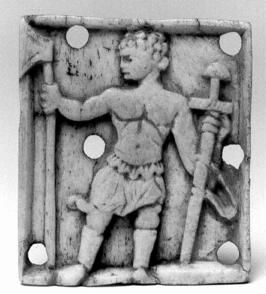
Spherical pommel:


A Varangian Guardsman (An Imperial Guard Unit composed of Anglo-Saxons and Scandinavians) bearing the weapons of his homeland:
Another compact hilted, spherically pommeled Byzantine Sword.

Spherical pommel:






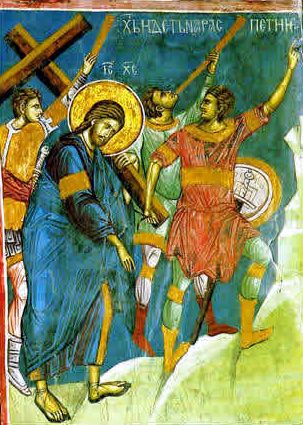








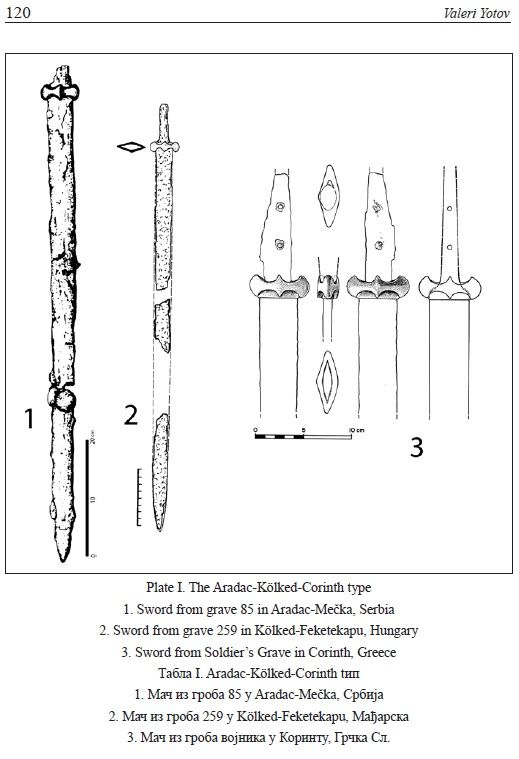


















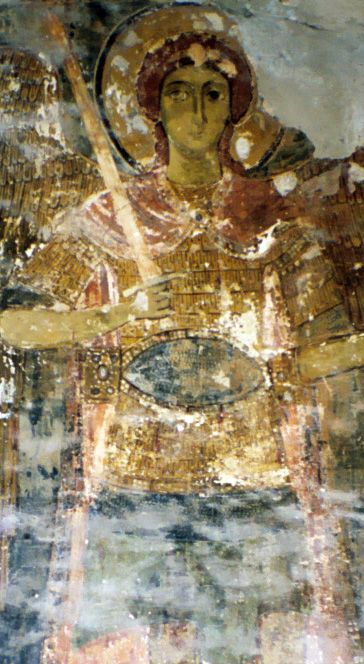

.png?width=1920&height=1080&fit=bounds)